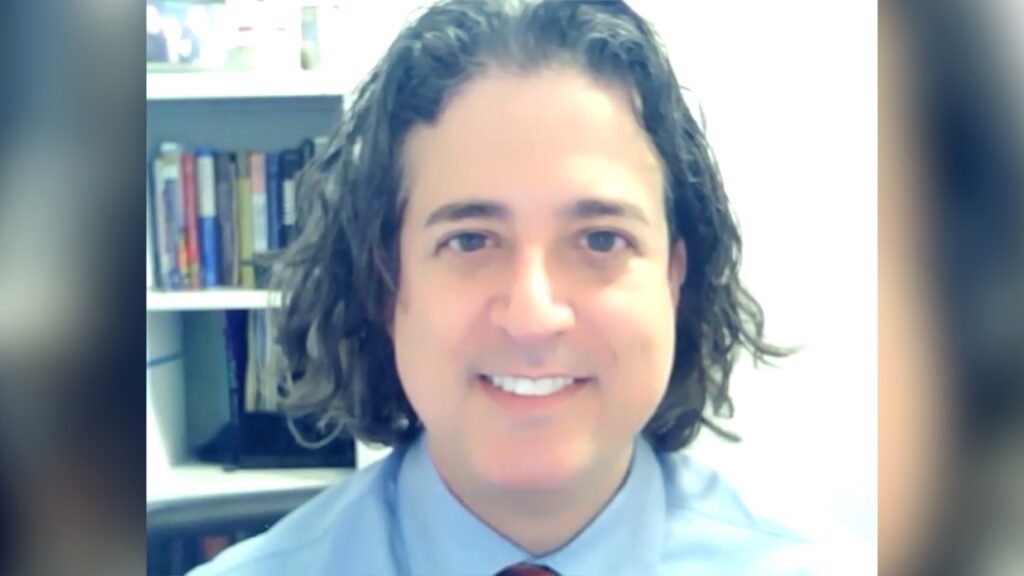There are numerous therapeutics available to patients with inflammatory skin diseases, including TNF-alpha inhibitors, IL inhibitors, TYK2 and JAK inhibitors, optimising the use of these therapies could be achieved with a personalised approach to treatment. We were delighted to speak to Expert Faculty member Dr. William Damsky (Yale School of Medicine, New Haven, CT, USA) around the current treatment paradigm for inflammatory skin diseases, the difficulties in selecting treatments in this indication and how a personalised approach to treatment might mitigate these challenges.
The abstract ‘Personalized medicine approaches to select the best treatment for patients with inflammatory skin diseases.’ was presented at AAD 2023, 17-21 March, 2023.
This information is brought to you by Touch Medical Media and is not sponsored by, nor a part of, the AAD.
Questions
- Could you give us a brief overview of the current treatment paradigm for inflammatory skin diseases? (0:12)
- What are the major challenges in treating inflammatory skin diseases and how will a personalised approach to treatment help to mitigate these? (2:12)
Disclosures: William Damsky discloses consulting for: Pfizer, Incyte, Eli Lilly, TWI Biotechnology, Fresenius Kabi, Epiarx Diagnostics, and Boehringer Ingelheim; receiving grant/research support from: Pfizer, Advanced Cell Diagnostics/Bio-Techne, AbbVie, Bristol Myers Squibb, and Incyte; and receiving licensing fees from: EMD/Millipore/Sigma.
Support: Interview and filming supported by Touch Medical Media Ltd. Interview conducted by Victoria Jones.
Filmed in coverage of the 2023 AAD Annual Meeting.
Click here for more content on dermatological conditions.
Transcript
Could you give us a brief overview of the current treatment paradigm for inflammatory skin diseases? (0:12)
Probably the best examples are to look at psoriasis and atopic dermatitis. These are two inflammatory skin diseases where pathogenesis has been worked out pretty definitively. And so psoriasis is thought to be driven by a Th17 or type 3 immune response and there’s a number of different medications used to treat it, which includes TNF-alpha inhibitors, IL-12 IL-23 inhibitors, IL- 23 specific inhibitors, IL-17 inhibitors and we now have TYK2 and IL-36 inhibitors. There’s a large number of treatments for patients with the same diagnosis. Atopic dermatitis is a Th2 polarized disease or a type 2 immune response, instead of inhibiting type 3 cytokines we’re interested in inhibiting type 2 cytokines, so IL-4 and -13 in particular are the most important ones. And so, there’s IL-4 IL 13 inhibitors through the receptor and there’s IL-13 specific inhibitors. Something new in dermatology is JAK inhibitors. So JAK inhibitors are approved for the treatment of vitiligo, alopecia areata, atopic dermatitis and now even psoriasis with the TYK2 inhibitors. These are medications that inhibit through an inhibition of JAK proteins, a broad number of cytokines. I would say that we have a large number of different therapies for these disorders, but our capabilities in science haven’t really caught up with clinical medicine and so we’re choosing medications empirically in patients. So, a patient with psoriasis may end up on a TNF-alpha inhibitor, an IL-23 inhibitor or an IL-17 inhibitor and we know that one medicine may be better for an individual patient, but we don’t have a good way of determining that. And so really the therapy choice is based on trial and error at this point.
What are the major challenges in treating inflammatory skin diseases and how will a personalised approach to treatment help to mitigate these? (2:12)
You know, I think they’re really it’s bridging this gap. So we have the ability in a research laboratory to really delve deep into the immunology of any individual patients, psoriasis or atopic dermatitis or another disease. But what we don’t have is ways to bring that ability necessarily to the clinic. So, ways to delve into any individual patients immunology so that we might be able to select the optimal agent for them right out of the gate as opposed to, you know, the sort of trial and error approach that we’re using currently.
Subtitles and transcript are autogenerated.











